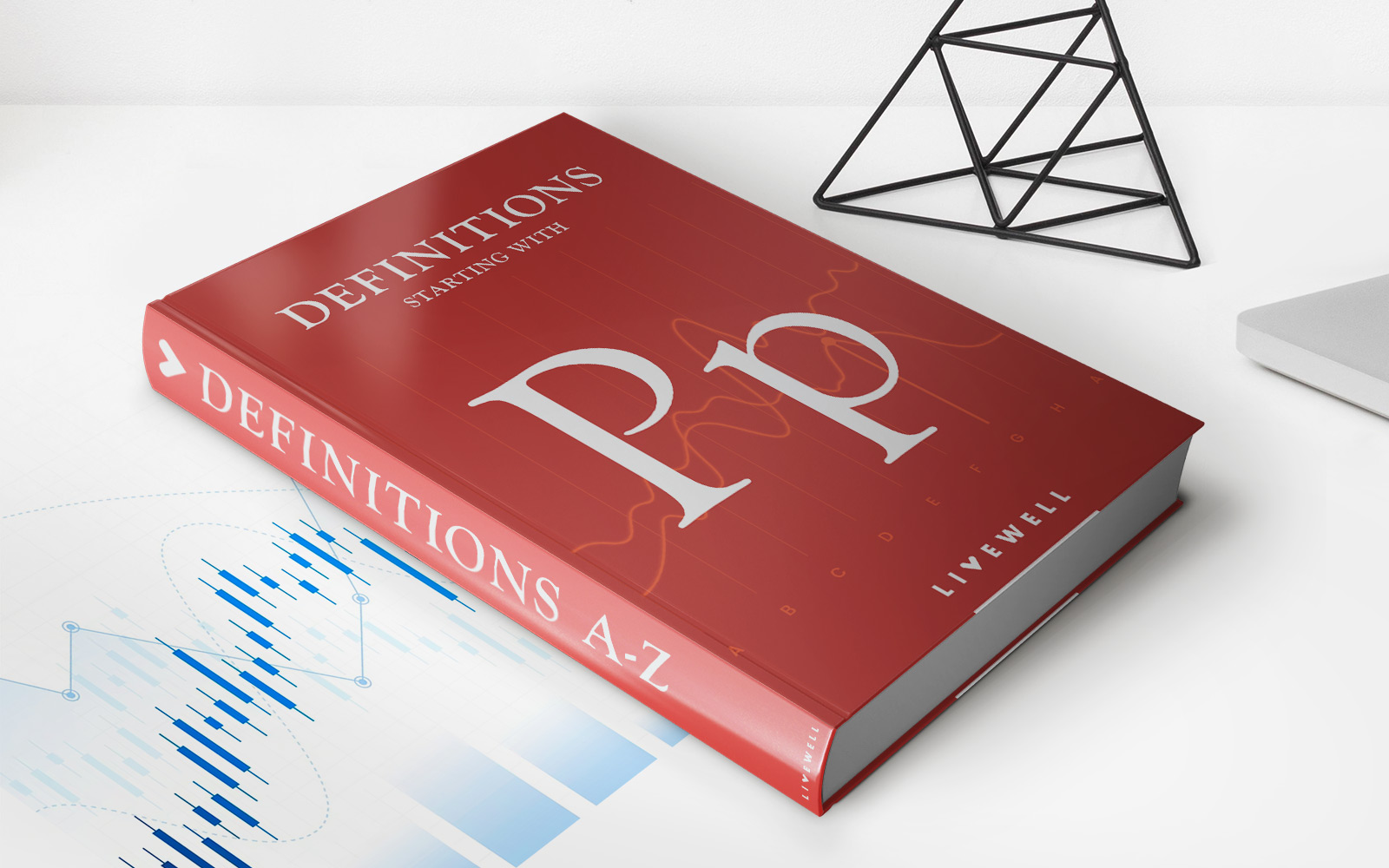Home>Finance>How Do Payday Loans Differ From Other Types Of Loans?


Finance
How Do Payday Loans Differ From Other Types Of Loans?
Modified: March 3, 2024
Discover the key differences between payday loans and other finance options. Learn how payday loans stand out in the world of finance.
(Many of the links in this article redirect to a specific reviewed product. Your purchase of these products through affiliate links helps to generate commission for LiveWell, at no extra cost. Learn more)
Table of Contents
Introduction
Understanding the Differences: Payday Loans and Other Types of Loans
When it comes to borrowing money, there are various options available to consumers. From traditional bank loans to installment loans and title loans, each type of loan serves different purposes and comes with its own set of terms and conditions. However, one of the most debated and often misunderstood forms of borrowing is the payday loan.
In this article, we will delve into the world of payday loans and explore how they differ from other types of loans. Understanding these differences is crucial for anyone considering borrowing money, as it can help make informed financial decisions and avoid potential pitfalls.
Payday loans have gained both popularity and notoriety in recent years, and it's essential to grasp their unique features and how they contrast with traditional bank loans, installment loans, and title loans. By shedding light on these distinctions, we aim to provide clarity and empower individuals to navigate the borrowing landscape with confidence.
So, let's embark on this insightful journey to unravel the nuances of payday loans and gain a comprehensive understanding of how they stand apart from other borrowing options.
Understanding Payday Loans
Payday loans, also known as cash advances or paycheck advances, are short-term, high-interest loans that are typically due on the borrower’s next payday. These loans are designed to provide quick access to funds to cover unexpected expenses or financial emergencies. The application process for payday loans is usually straightforward, with minimal documentation and quick approval, making them an attractive option for individuals facing urgent cash needs.
One of the defining features of payday loans is their accessibility, as they often cater to individuals with poor credit or limited access to traditional banking services. This accessibility, however, comes at a cost, as payday loans are associated with exorbitant interest rates and fees, making them a potentially expensive form of borrowing.
Payday loans are typically for small amounts, ranging from $100 to $1000, and are meant to be repaid in full, along with the accrued interest and fees, within a short timeframe, usually within two to four weeks. While these loans offer a quick financial fix, the high cost of borrowing and the short repayment period can lead to a cycle of debt for borrowers who struggle to repay the full amount on time.
It’s important to note that payday loans are regulated at the state level, with varying laws and restrictions governing their availability and terms. Some states have implemented stringent regulations to protect consumers from predatory lending practices, while others have more lenient laws, allowing payday lenders to charge high fees and interest rates.
Understanding the inner workings of payday loans, including their accessibility, high costs, and short repayment periods, is crucial for individuals considering this borrowing option. While these loans can provide immediate relief in times of financial strain, it’s essential to weigh the pros and cons carefully and explore alternative solutions before committing to a payday loan.
How Payday Loans Differ from Traditional Bank Loans
When comparing payday loans to traditional bank loans, one of the most striking differences lies in their accessibility and approval process. Traditional bank loans typically involve a comprehensive application, credit checks, and collateral requirements, making them less attainable for individuals with poor credit or urgent financial needs. In contrast, payday loans are often available to borrowers with limited credit history or lower credit scores, offering a quick and relatively hassle-free approval process.
Another differentiating factor is the loan amount and repayment terms. Traditional bank loans are generally for larger amounts and have longer repayment periods, spanning several years. These loans are suitable for significant investments, such as purchasing a home or financing a business venture. In contrast, payday loans are designed for small, short-term needs, with loan amounts typically ranging from $100 to $1000 and repayment periods of just a few weeks.
Interest rates also set payday loans apart from traditional bank loans. While traditional bank loans often feature lower interest rates due to their secured nature and longer terms, payday loans carry substantially higher annual percentage rates (APRs). The high APRs associated with payday loans can make them a costly borrowing option, especially if the loan is not repaid in full by the due date.
Furthermore, the use of collateral differs between these two loan types. Traditional bank loans frequently require collateral, such as real estate or valuable assets, to secure the loan and mitigate the lender’s risk. In contrast, payday loans are typically unsecured, meaning they do not necessitate collateral. This unsecured nature simplifies the application process for payday loans but also exposes borrowers to higher risks and interest rates.
Understanding these disparities between payday loans and traditional bank loans is essential for individuals evaluating their borrowing options. While traditional bank loans offer lower interest rates and longer repayment terms, they may not be feasible for those with urgent cash needs or imperfect credit histories. On the other hand, payday loans provide quick access to funds but come with higher costs and shorter repayment periods, necessitating careful consideration before choosing the most suitable borrowing avenue.
The Differences between Payday Loans and Installment Loans
When contrasting payday loans with installment loans, one of the primary distinctions lies in their repayment structures. Payday loans are typically due in full on the borrower’s next payday, resulting in a short and concentrated repayment period. In contrast, installment loans allow borrowers to repay the borrowed amount over an extended period through a series of scheduled payments, often spanning months or years. This variance in repayment terms offers greater flexibility for borrowers, as they can spread out the loan repayment, making it more manageable and predictable.
Loan amounts also differ significantly between payday loans and installment loans. Payday loans are generally for smaller amounts, intended to cover immediate expenses or financial gaps, while installment loans can be obtained for larger sums, making them suitable for substantial purchases or long-term financial needs.
Moreover, the cost of borrowing varies between these loan types. Payday loans typically carry higher annual percentage rates (APRs) and fees compared to installment loans, reflecting the short-term and high-risk nature of payday lending. In contrast, installment loans often feature lower APRs, making them a more cost-effective borrowing option for individuals seeking larger loan amounts and longer repayment periods.
Credit checks and eligibility requirements also set payday loans and installment loans apart. Payday loans are known for their lenient credit requirements, making them accessible to individuals with poor credit or limited credit history. In contrast, installment loans may involve more stringent credit checks and eligibility criteria, as they are tailored for borrowers seeking larger sums and extended repayment terms.
Understanding these differences is crucial for individuals contemplating their borrowing options, as it can guide them in selecting the most suitable loan type based on their financial needs and repayment capabilities. While payday loans offer quick access to small amounts with short repayment periods, they come with higher costs and may not be suitable for long-term financial solutions. On the other hand, installment loans provide flexibility, larger loan amounts, and extended repayment terms, making them a viable choice for individuals requiring more substantial and structured borrowing arrangements.
Payday Loans vs. Title Loans
When comparing payday loans and title loans, it’s essential to recognize the distinct features and underlying differences that shape these two forms of borrowing. Payday loans and title loans serve diverse financial needs and are structured around distinct collateral requirements and repayment terms.
Payday loans are unsecured, short-term loans that typically do not require collateral. These loans are based on the borrower’s income and are designed to provide quick access to funds to cover immediate expenses. In contrast, title loans are secured loans that require the borrower to pledge their vehicle’s title as collateral. The amount of the loan is based on the vehicle’s value, and the borrower risks losing their vehicle if they default on the loan.
Repayment terms also differ between payday loans and title loans. Payday loans are typically due in full on the borrower’s next payday, usually within two to four weeks, while title loans have longer repayment periods, often ranging from 30 days to several months. The extended repayment terms of title loans provide borrowers with more time to repay the loan but also entail the risk of losing their vehicle if they fail to meet the repayment obligations.
Another significant contrast lies in the loan amounts available through these borrowing options. Payday loans are generally for smaller amounts, ranging from $100 to $1000, while title loans offer access to larger sums, often based on the appraised value of the borrower’s vehicle. This distinction in loan amounts makes title loans suitable for individuals requiring substantial funds and willing to use their vehicle as collateral, while payday loans cater to immediate and smaller financial needs.
Interest rates and fees also vary between payday loans and title loans. Payday loans are associated with high annual percentage rates (APRs) and fees due to their short-term and unsecured nature. In contrast, title loans may carry lower APRs, as they are secured by collateral, but the risk of losing the vehicle adds a significant financial and personal risk for the borrower.
Understanding the disparities between payday loans and title loans is essential for individuals evaluating their borrowing options. While payday loans offer quick access to smaller amounts without collateral requirements, they come with higher costs and short repayment periods. On the other hand, title loans provide access to larger sums by leveraging the borrower’s vehicle as collateral, offering extended repayment terms but carrying the risk of vehicle repossession in case of default.
Conclusion
Exploring the differences between payday loans and other types of borrowing illuminates the unique aspects and considerations associated with each loan option. Payday loans, characterized by their accessibility and quick approval process, cater to immediate financial needs but come with high costs and short repayment periods. Understanding the distinct features of payday loans, traditional bank loans, installment loans, and title loans is pivotal for individuals seeking financial assistance, as it empowers them to make informed decisions aligned with their specific circumstances and requirements.
When evaluating borrowing options, it’s crucial to consider factors such as loan amounts, repayment terms, interest rates, and collateral requirements. Traditional bank loans offer larger sums, lower interest rates, and longer repayment periods, making them suitable for substantial investments and long-term financial needs. In contrast, payday loans provide quick access to smaller amounts with minimal credit requirements but entail higher costs and immediate repayment obligations.
Installment loans present a middle ground, offering larger loan amounts with extended repayment terms and lower APRs, making them a viable option for individuals seeking structured and manageable repayment schedules. Title loans, secured by the borrower’s vehicle, offer access to substantial funds but carry the risk of vehicle repossession if the loan is not repaid according to the agreed terms.
By comprehending the nuances of each loan type, individuals can make informed decisions that align with their financial goals and capabilities. It’s essential to assess the urgency of the financial need, evaluate the repayment feasibility, and consider the associated costs and risks before selecting the most suitable borrowing option.
Ultimately, a well-informed approach to borrowing can help individuals navigate financial challenges while minimizing the potential drawbacks associated with each loan type. Whether it’s addressing immediate expenses with a payday loan, securing a substantial investment through a traditional bank loan, or leveraging collateral for a title loan, understanding the differences between these borrowing options is instrumental in making sound financial decisions and achieving greater financial stability.














